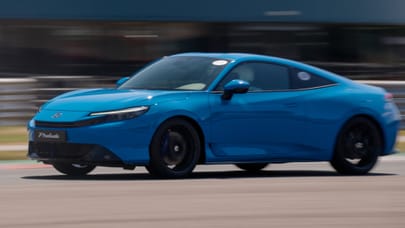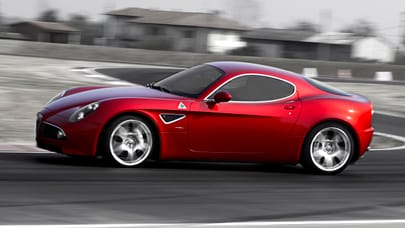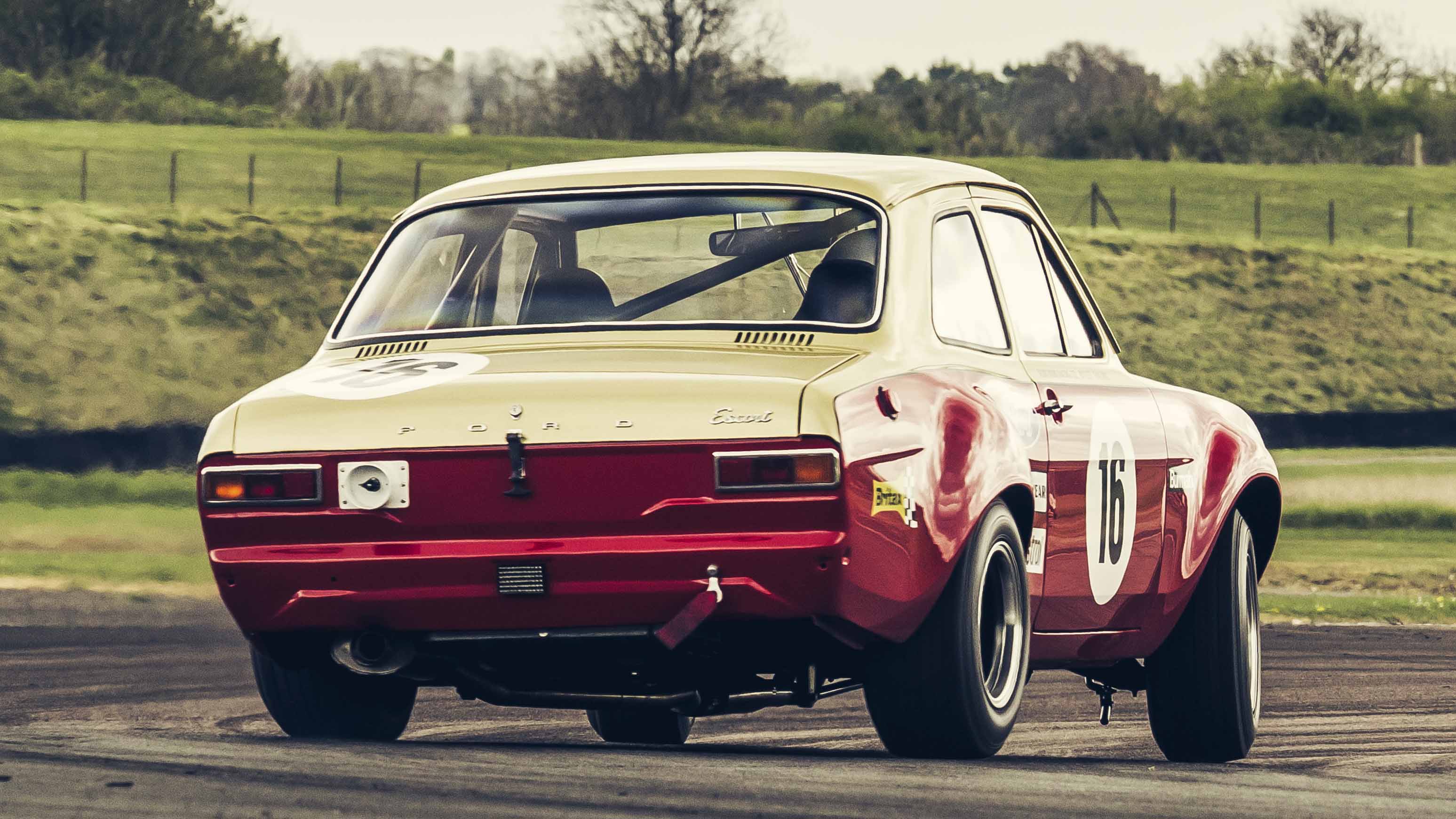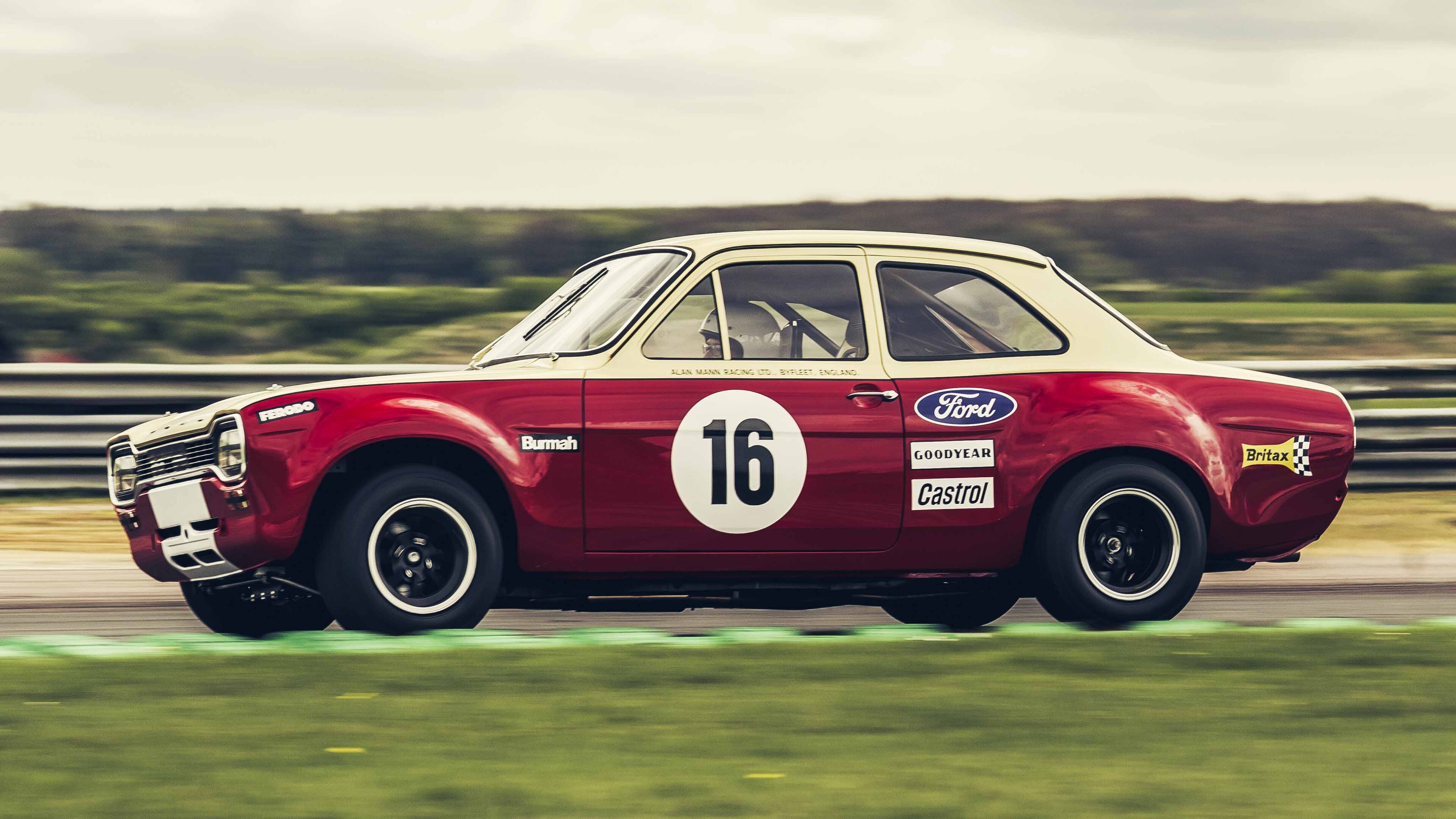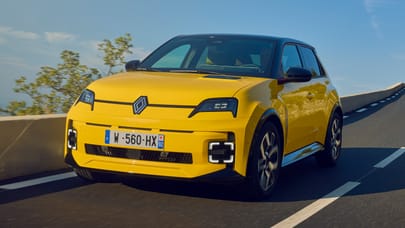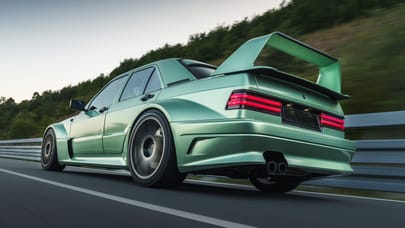
Time machine: full throttle in the stunning Alan Mann Ford Escort replica
An identikit Ford Escort to the one that saw Frank Gardner to the British Saloon Championship in 1968? Sign us up
The year is 1968. And if you’re a racing driver in the British Saloon Car Championship and your name’s not Frank Gardner, bad luck. You just lost. Because to be fast that year, only one thing would do: the Alan Mann prepped Ford Escort. Gardner won all but two of the 11 rounds, in a car in its first year of competition.
No car is fast immediately. It takes a while for engineers, mechanics and designers to learn their foibles, extract their potential. Unless you’re Alan Mann. An instinctive, innovative engineer, he’d set up by himself in 1962 and two years later he’d won the contract to be Ford’s official racing partner in Europe, running everything from Mustangs and Falcons to Cortinas, GT40s and this legendary Group 5 Escort.
Group 5 was as close as things got to a no limits touring car. This car’s iconic bubble arches were crafted to cope with fatter rubber, all new multi-link rear suspension was designed, the steering column was realigned so it projected at a straighter angle and the steering rack was actually housed inside the engine crossmember. Apparently this car had a fair amount in common with the GT40s Mann also campaigned. Rounding out the radical package was a 1.8-litre Lotus Twin Cam, developing around 230bhp. The result was a small, light, well balanced and fantastically eager racing car. Painted in Mann’s iconic red and gold colours it was as sweet to look at as it was to drive. Few cars look as good in a corner as this one.
Photography: Olgun Kordal
Ford supplied Alan Mann with six cars that season. At the end of the following year, four were returned, one had been converted to a different specification, and one – the famous, championship winning XOO 349F – was left with Mann. And there it remained. Alan died in 2012, but his son Henry continues to maintain and campaign the car.
This isn’t it, though. What you’re looking at here is an exact nut and bolt replica. The original was stripped down with every component scanned to reverse engineer it precisely as it was. The only way to tell it apart from the original when I line them up alongside each other is that only one has a roll cage. The new one – it’s now a safety requirement for historic racing. But this isn’t a one-off – the plan is to build 24 identikit replicas. There’s a pleasing circular story here. Just as Alan Mann was Ford’s official racing partner back in the 1960s, so has Boreham Motor Works (which now owns Alan Mann Racing) recently become Ford’s official restomod partner. You may have heard about other fast Fords it has in the pipeline – a reimagined Group B RS200 and a £295,000 roadgoing fast Escort with a 295bhp 2.1-litre twin cam good for 10,000rpm.
But this isn’t a restomod, it’s a non-road legal period piece that Henry very much hopes owners will choose to race. It’s what it was designed for after all. And what it feels like. I want to start slowly but the car would rather I didn’t. It might be an old design, but it’s a racing car, it’s only got one speed and it’s not ‘pitlane pootle’. The racing twin plate clutch needs revs to pull away, first can be hard to find, there’s plenty of vibration and as I trundle out on to the track it honestly feels like all the wheels are pulling in different directions. For the first few hundred yards I wondered at the wisdom of an exact recreation.
And thereafter I had the time of my life. As with all racing cars, it needs to be used hard, and then it just works. Get some pressure in the suspension, some load in the engine and you feel the whole car snap to attention.
As you’d hope it’s a period correct driving experience. This is not a car in which all you do is accelerate, brake and steer and it responds with ruthless precision. You’re busy the whole time, juggling the steering and throttle, rowing the gearlever around the four (yes, only four) gate box, planning the next corner. Even driving in a straight line requires concentration – the Alan Mann 68 Edition (to give this one its proper name) prefers to be turning.
Top Gear
Newsletter
Thank you for subscribing to our newsletter. Look out for your regular round-up of news, reviews and offers in your inbox.
Get all the latest news, reviews and exclusives, direct to your inbox.
I assumed my steering inputs would be large and sweeping, that it would settle satisfyingly in corners but that’s not the case initially. It’s light – just 795kg without fluids – and the wheelbase is short, so every single twitch you make has an instant and marked impact on your speed and trajectory. There’s nothing lazy or languid about it and being quick in it isn’t about armfuls of opposite lock and big angles, it’s about playing with the balance at the margins.
The brakes are way more potent than you might expect, but this is not a car you trail brake all the way to the apex. Instead you roll off the brakes sooner, turning in and then immediately back on the power to adjust line and trajectory. Great fun, but it was a little fidgety through long, fast corners so, at Henry’s suggestion, we soften the rear dampers off.
It’s a transformation. Through the quick curves that define Thruxton the Escort now squats smoothly down on its outside rear wheel and just powers through, nose up, tail down, all the pressure seemingly through that one wheel. Those pictures we’ve all seen of touring cars back then four wheel drifting through corners, almost waggling the unloaded front wheel in the air? This is what it feels like and it’s utterly brilliant. The full 1960s experience.
This is a special car. Wonderfully vivid and fantastically engaging, one with genuine historic importance
Massively absorbing, way more entertaining than any modern fast, focused ’n’ flat racer. This is a car that uses its suspension differently, that isn’t designed to keep the platform as level and neutral as possible at all times, but instead lets you move the pressure around, so you can use the weight to help you uncork the engine’s full potential.
The four cylinder barks loudly and aggressively inside, ringing through my period helmet. It’s an eager beaver hard charger, but 205bhp on the UK’s fastest racetrack means a lot of time spent flat in fourth. But still, 205bhp from 1.8 litres on Weber carbs with only two valves per cylinder? That’s impressive. Through the slower corners it’s the throttle’s instant response and its effect not only on speed but balance that is so notable. And the fact you’re forever manipulating gears and trying to finesse heel ’n’ toe downshifts via the sharp clutch and a gearlever skinnier than most column stalks. The shift is imprecise at low speeds, a bit vague, but once up and running I never missed – or even fluffed – a shift.
This is a special car. Wonderfully vivid and fantastically engaging, one with genuine historic importance and a cracking back story. The cost will be terrifying, but it’s vanishingly rare to drive something that’s not just period correct, but correct down to the tiniest detail, that is so emphatically authentic and true to what’s gone before. It put me in a time capsule. The thought of lining up alongside a bunch of other touring cars and tearing strips off each other might just be one of the most amusing things you could do in a car.
Trending this week
- Car Review
Lamborghini Temerario
- Long Term Review
Five curious things about the Jaecoo 7
- Car Review
BMW 2 Series Coupe





